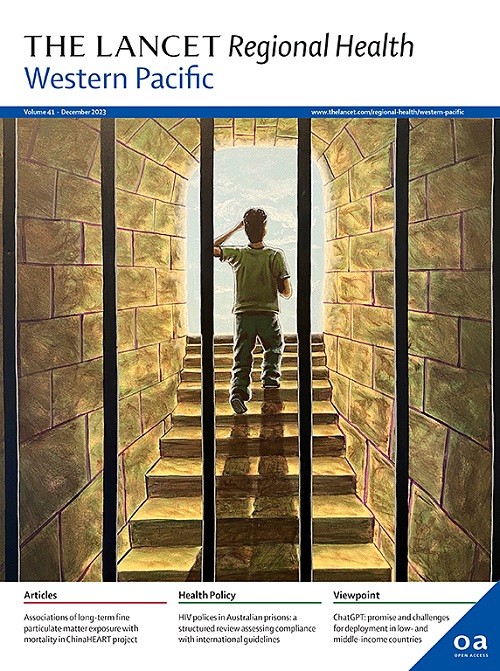Assessing the gaps in cardiovascular disease risk assessment and management in primary care for Māori and Pacific peoples in Aotearoa New Zealand— a systematic review
IF 7.6
1区 医学
Q1 HEALTH CARE SCIENCES & SERVICES
引用次数: 0
Abstract
Background
Māori and Pacific peoples carry the highest burden of cardiovascular disease in New Zealand (NZ). This systematic review aimed to determine access to evidence-based cardiovascular disease risk assessment (CVDRA) and management in primary care for Māori and Pacific peoples compared with other ethnicities in NZ, as well as factors contributing to reduced access.
Methods
In this systematic review with a narrative synthesis, keywords related to Māori and Pacific peoples, cardiovascular disease, and primary care were used to search MEDLINE (OVID), EMBASE, Scopus, CINAHL, NZresearch.org, National Library Catalogue (Te Puna), Index New Zealand (INNZ), and Australia/New Zealand Reference Centre, grey literature and hand search sources from 1 January 2000 to 31 December 2024. Two reviewers screened texts and three reviewers extracted data and assessed quality. High quality was defined using Western (Mixed Methods Appraisal Tool, MMAT, ≥80% compliance) and Indigenous (CONSolIDated critERtia for strengthening the reporting of health research involving Indigenous Peoples, CONSIDER) research tools. The protocol for this systematic review was registered at: https://doi.org/10.17605/OSF.IO/VUDE9.
Findings
A total of 2765 texts were identified of which 69 were included. This review identified inadequate levels of CVDRA in Māori and Pacific peoples when measured against the 90% national target. While the provision of primary prevention medications was higher (antihypertensives) or similar (lipid-lowering) compared to that for other ethnic groups, adherence was lower for Māori and Pacific peoples compared to other groups. Māori and Pacific peoples were less likely than others to receive antiplatelets and lipid-lowering therapy for secondary prevention. Evidence for antihypertensives in secondary prevention and combination therapy (in primary or secondary prevention) was mixed. Māori and Pacific peoples experienced reduced access to revascularisation compared with other ethnic groups, an inequity that persisted over time. Factors contributing to CVDRA and management were provision of adequate health literacy, relationships with providers and whānau, access to care, and cultural safety. While 64% of studies were ≥80% compliant with the MMAT, suggesting high quality from a Western research perspective, 71% of studies had an adapted CONSIDER score ≤2, suggesting low quality from an Indigenous perspective. The CONSIDER domains with the highest levels of reporting were Prioritisation, and Analysis and interpretation, while Capacity and Dissemination were the least reported domains. Qualitative studies had generally higher levels of CONSIDER reporting than mixed methods and quantitative studies. Kaupapa Māori Research was of the highest quality, followed by studies focused on Māori and/or Pacific peoples, while studies not focused on Māori and/or Pacific peoples had the lowest levels of CONSIDER reporting.
Interpretation
Extensive and inequitable gaps in CVDRA and management for Māori and Pacific peoples were identified. Opportunities for reducing these gaps include providing adequate CVD literacy, involvement of whanāu, patient-provider relationships, access to care, and enhancing cultural safety. Our findings will contribute to the development of a cardiovascular care equity roadmap in NZ. There are opportunities to improve reporting against the adapted CONSIDER criteria, which involves critical inquiry and a strength-based approach inclusive of Māori and Pacific values, particularly in quantitative research and research including but not focusing on Māori and Pacific peoples.
Funding
The Heart Foundation of New Zealand and Healthier Lives National Science Challenge, grant number 1819.
评估新西兰奥特罗阿Māori和太平洋人民初级保健中心血管疾病风险评估和管理方面的差距——一项系统审查
BackgroundMāori和太平洋地区人民在新西兰的心血管疾病负担最重。本系统综述旨在确定与新西兰其他种族相比,Māori和太平洋民族在初级保健中获得循证心血管疾病风险评估(CVDRA)和管理的可及性,以及导致可及性降低的因素。方法采用叙事综合的方法,对2000年1月1日至2024年12月31日期间的MEDLINE (OVID)、EMBASE、Scopus、CINAHL、NZresearch.org、National Library Catalogue (Te Puna)、Index New Zealand (INNZ)和Australia/New Zealand Reference Centre、灰色文献和手工检索源进行检索,检索关键词为Māori和Pacific peoples、心血管疾病和初级保健。两名审稿人筛选文本,三名审稿人提取数据并评估质量。使用西方(混合方法评估工具,MMAT,≥80%依从性)和土著(加强土著人民健康研究报告的综合标准,考虑)研究工具定义高质量。本系统评价的方案在https://doi.org/10.17605/OSF.IO/VUDE9.FindingsA上注册,共确定了2765篇文章,其中69篇被纳入。该审查确定Māori和太平洋人民的CVDRA水平低于90%的国家目标。虽然与其他种族相比,初级预防药物的提供更高(降压药)或类似(降脂药),但Māori和太平洋民族的依从性比其他群体低。Māori和太平洋地区的人比其他人更不可能接受抗血小板和降脂治疗作为二级预防。二级预防和联合治疗(一级或二级预防)降压的证据好坏参半。Māori与其他种族相比,太平洋地区的人获得血管重建的机会较少,这种不平等长期存在。促进CVDRA和管理的因素是提供适当的卫生知识、与提供者和whānau的关系、获得护理和文化安全。虽然64%的研究≥80%符合MMAT,从西方研究的角度来看,这表明质量高,但71%的研究适应的考虑评分≤2,从土著研究的角度来看,这表明质量低。报告水平最高的考虑领域是优先级,分析和解释,而能力和传播是报告最少的领域。定性研究通常比混合方法和定量研究有更高的考虑报告水平。Kaupapa Māori的研究质量最高,其次是关注Māori和/或太平洋民族的研究,而不关注Māori和/或太平洋民族的研究报告的考虑水平最低。解释查明了Māori和太平洋人民在CVDRA和管理方面存在广泛和不公平的差距。减少这些差距的机会包括提供充分的心血管疾病知识、whanāu的参与、患者-提供者关系、获得护理和加强文化安全。我们的研究结果将有助于新西兰心血管护理公平路线图的发展。有机会根据经调整的考虑标准改进报告,其中涉及批判性调查和基于实力的方法,包括Māori和太平洋价值观,特别是在定量研究和研究中,包括但不关注Māori和太平洋人民。新西兰心脏基金会和健康生活国家科学挑战,资助号1819。
本文章由计算机程序翻译,如有差异,请以英文原文为准。
求助全文
约1分钟内获得全文
求助全文
来源期刊

The Lancet Regional Health: Western Pacific
Medicine-Pediatrics, Perinatology and Child Health
CiteScore
8.80
自引率
2.80%
发文量
305
审稿时长
11 weeks
期刊介绍:
The Lancet Regional Health – Western Pacific, a gold open access journal, is an integral part of The Lancet's global initiative advocating for healthcare quality and access worldwide. It aims to advance clinical practice and health policy in the Western Pacific region, contributing to enhanced health outcomes. The journal publishes high-quality original research shedding light on clinical practice and health policy in the region. It also includes reviews, commentaries, and opinion pieces covering diverse regional health topics, such as infectious diseases, non-communicable diseases, child and adolescent health, maternal and reproductive health, aging health, mental health, the health workforce and systems, and health policy.
 求助内容:
求助内容: 应助结果提醒方式:
应助结果提醒方式:


